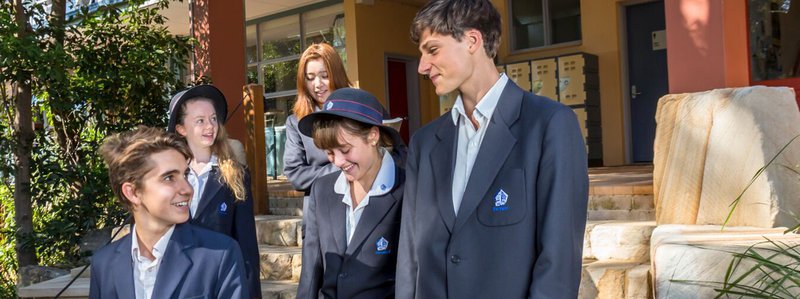
The show was sheer joy from beginning to end. No matter how well you knew the Gilbert and Sullivan show and its inspired silliness set to sumptuous music, you would have been swept away by the Year 10 production. The brilliant quality of the voices, the laugh-out-loud funny scenes, the wonderful dancing, not to mention the incredible intensity of the stage movements, all made for a perfect entertainment of a show.
Thank you to all the teachers who put so many months of work into the coaching and preparation:
* Christian Lillicrap, Musical Director
* Jacqui Wan and Claire Cisterne, Directors
* Claire Cisterne, Choreography
* Evan Sanders, Lighting, Sets
* Jacqueline Rees, Costumes
* Alisan Smotlak, Sets
* Magdalena Koehlen, Voice Training
* Clare Gordon, Events Coordinator and Backstage backup
* Ella Pooley and Yura Totsuka, Backstage help and support
The Year 10 parents who have supported, fed, and transported have done a magnificent job. While it may be invidious to name names, Robin Borrud and Dani Finch deserve some special mention for enormous service to the whole year group. And of course our glorious performers, our Year 10, did themselves proud with their universal commitment and sustained performances over four wonderful shows. Thank you to all! It was a gift to the whole community.
The Year 10 year musical is something to behold in its comprehensive and complete education: as well as preparing for the academic rigours of the senior Years 11 and 12, the students go from high jinx on a theatre stage to the wilds of Tasmania and the challenge of hiking the South Coast Track. Our school is not just one program: we are not just an Outdoor Ed school, we are not just a Music or performing arts school, we are not an Art school. We are a school for educating the whole human being, with each one of those programs as a way of educating one aspect of the complete person. The beauty and the power of this deep learning lies in the whole.
I was reminded of how powerful this balance is by a recent article in the New York Times by the authors of "In Search of Deeper Learning: The Quest to Remake the American High School.” They spent six years researching the question of what makes schools an engaging place, what we would call, meaningful for students. They came to some startling conclusions, but conclusions that are very affirming for us as a Steiner school.
In short they found that the activities where students are most engaged are what in a mainstream school is “on the periphery” in activities such as theatre and outdoor education. The power of the Glenaeon program as a Steiner school is to build these experiences into the fabric of the education for every student: the power lies in the whole. Quoting from the article:
"When the two of us — a sociologist and a former English teacher — began our own investigation of this question several years ago, we made two assumptions. Both turned out to be wrong.
The first was that innovative schools would have the answers. We travelled from coast to coast to visit 30 public high schools that had been recommended by leaders in the field. What we saw, however, was disheartening. Boredom was pervasive. Students filled out worksheets, answered factual questions, constructed formulaic paragraphs, followed algorithms and conducted “experiments” for which the results were already known. Covering content almost always won out over deeper inquiry — the Crusades got a week; the Cold War, two days.
The result? In lower-level courses, students were often largely disengaged; in honours courses, students scrambled for grades at the expense of intellectual curiosity. Across the different class types, when we asked students to explain the purpose of what they were doing, their most common responses were “I dunno” and “I guess it’ll help me in college.”
Our second mistake was that we assumed the place to look for depth was in core academic classes. As we spent more time in schools, however, we noticed that powerful learning was happening most often at the periphery — in electives, clubs and extracurriculars. Intrigued, we turned our attention to these spaces. We followed a theatre production. We shadowed a debate team. We observed elective courses in green engineering, gender studies, philosophical literature and more.
As different as these spaces were, we found they shared some essential qualities. Instead of feeling like training grounds or holding pens, they felt like design studios or research laboratories: lively, productive places where teachers and students engaged together in consequential work. It turned out that high schools — all of them, not just the “innovative” ones — already had a model of powerful learning. It just wasn’t where we thought it would be.
Consider the theatre production that we observed at a large public high school in an affluent suburban community. Students who had slouched their way through regular classes suddenly became capable, curious and confident. The urgency of the approaching premiere lent the endeavour a sense of momentum. Students were no longer vessels to be filled with knowledge, but rather people trying to produce something of real value. Coaching replaced “professing” as the dominant mode of teaching. Apprenticeship was the primary mode of learning. Authority rested not with teachers or students but with what the show demanded.




